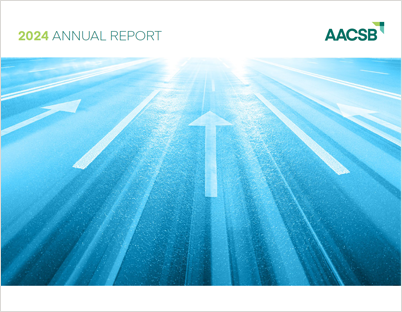How Research Impact Is Shaped by Tacit Knowledge
Impact is the driver for much of the academic research being produced today, in part because a growing number of governmental bodies now formally assess how university research benefits society. For instance, the Australian Research Council and the U.K.’s Research Excellence Framework both analyze research impact when allocating funds, and similar bodies have been established or are under consideration in France, Italy, Spain, and the Netherlands. Unfortunately, evidence suggests that much business school research is underperforming on this metric—at least, according to the ways many governments have defined impact.
But we believe that both governments and scholars are considering only the most visible aspects of impact, such as whether the university has been able to commercialize new knowledge or spin it off into inventions and startups. In other words, they are focusing too much on the “know what” of research and too little on the “know how.” This leads them to overlook one critical component that is both undercounted and underestimated when analyzing for impact: tacit knowledge.
Tacit knowledge is the intelligence that people draw on while doing a task—such as driving a car or teaching a class—but that they find difficult to express in language. They might not even be conscious of the fact that they’re using it. For instance, a map is an artifact of explicit knowledge, but people must draw on tacit knowledge if they are to use it to figure out where they are and where they need to go. Tacit knowledge makes a difference, but it defies quantification. It is contextual and grounded in experience.
In an open access paper that recently appeared in Higher Education Research & Development, we explore the role of tacit knowledge in research impact. We contend that, to be impactful, research results must tap into the tacit knowledge that practitioners possess. Academics need to understand how to access practitioners’ tacit knowledge and incorporate it into their research findings. We believe that tacit knowledge is the missing piece of the research-impact relationship.
Transferring Tacit Knowledge
There are two types of tacit knowledge. Implicit or interactional knowledge is something that individuals can make explicit if they reflect on how they do things. Inherent or practice-based knowledge cannot be articulated, but it can be observed and emulated.
Michael Polanyi, who coined the phrase “tacit knowledge,” encapsulated this second type of knowledge in his memorable phrase, “We can know more than we can tell.” Lew Platt, the former Hewlett-Packard CEO, echoed this comment when he famously said, “If HP knew what HP knows, we’d be three times more productive.”
Two key processes allow us to turn tacit knowledge into explicit knowledge:
Externalization. Interactional tacit knowledge can be shared through externalization tools such as words, images, and concepts. But to create these sharing tools, individuals first must become more aware of the tacit knowledge they possess. An academic who needs to gain tacit knowledge from practitioners can guide them through self-reflection exercises and ask them direct questions.
When academics experience a deep immersion within the stakeholders’ world, they gain a profound understanding of how things are done. They can use this knowledge to embed explicit knowledge into their research findings.
For instance, a researcher could encourage practitioners to recall times when someone has said to them, “I like the way you think.” The academic would then ask, “How would you describe your way of thinking?” Perhaps they can remember saying to someone else, “That’s not going to work.” What tacit knowledge were they drawing on to make that observation? An academic who guides practitioners through these reflective exercises will surface their tacit knowledge and be able to convey it to others.
Once researchers have gained this tacit knowledge, they can convey it through externalization tools such how-to books and do-it-yourself manuals. Like popular knowledge books that proliferate at airports, these manuals might use everyday examples to illustrate concepts such as organizational dilemmas and potential solutions. Similarly, treatises on corporate governance reform might provide written guidance on developing professional standards, protocols, and regulation.
Socialization. Practice-based tacit knowledge is best acquired through group activities that allow academics to observe and emulate the behavior of practitioners. Therefore, to be able to gain the tacit knowledge that practitioners possess, faculty must carefully manage stakeholder relationships.
At the individual level, academics can adopt several socialization techniques. For instance, they can take temporary placements within governmental departments or act as consultants to corporate clients. In the U.K., academics can participate in a Knowledge Transfer Partnership, where they work with individuals on problems within a company. Candidates in DBA programs also frequently join with practitioners to address specific challenges.
At the collective level, people can share knowledge through socialization techniques such as communities of practice or industry sabbaticals. In these situations, practitioners and academics with specific expertise work together to solve particular problems, often at the behest of professional bodies or governmental agencies.
When academics experience a deep and sustained immersion within the stakeholders’ world, they gain a profound understanding of how things are done. They can use their newly gained insights to embed explicit knowledge into their research findings.
Providing Support and Resources
If deans and research directors want their faculty to create research with impact, they must understand and support the mechanisms that transfer tacit knowledge. Socialization processes can be arduous, time-consuming, and costly. Externalization processes also require time as well as intense periods of introspection—and, often, must rely on expert guidance to properly capture tacit knowledge. Therefore, research directors and deans need to understand the value of funding externalization and socialization activities such as DBA apprenticeships, consultancy assignments, and secondments of academics within other organizations.
We contend that many impact assessments focus too narrowly on the production of explicit knowledge with visible results, while overlooking the central role of tacit knowledge.
In addition, administrators must recognize that, when it comes to creating research with impact, practitioners are an integral part of the conversation because they possess the tacit knowledge that researchers need to acquire. This means that deans and research directors should support the creation of communities of practice, within their research centers and elsewhere, that include both scholars and professionals. It also means that stakeholders need to understand the concept of tacit knowledge and how important it is for them to share it with researchers.
Broadening the Focus
We contend that many impact assessments focus too narrowly on the production of explicit knowledge with visible results, while overlooking the central role of tacit knowledge. Faculty must be given the tools and resources to gain tacit knowledge from practitioners so they can incorporate the information into their research findings.
We also believe schools would be more likely to explore tacit knowledge if the governmental bodies that assess the impact of research would consider how such knowledge contributes to that impact. For instance, governmental bodies could look at qualitative indicators of socialization and see how these interactions have created and conveyed tacit knowledge.
The U.K. Research Councils have taken a step in the right direction, as evidenced by a comment on page 52 of their 2016 report. In the report, the Councils emphasize the importance of focusing “on all intellectual assets flowing from research, and not solely IP rights, given that softer modes of IP exploitation, such as know-how, can have greater impact.” Other national assessment bodies could follow their example.
The field of management education would benefit from the input of academics who have created impact from their scholarship—particularly those who have reflected on the role that tacit knowledge plays. Such a discussion would add more clarity to the vexed debate about research impact.





